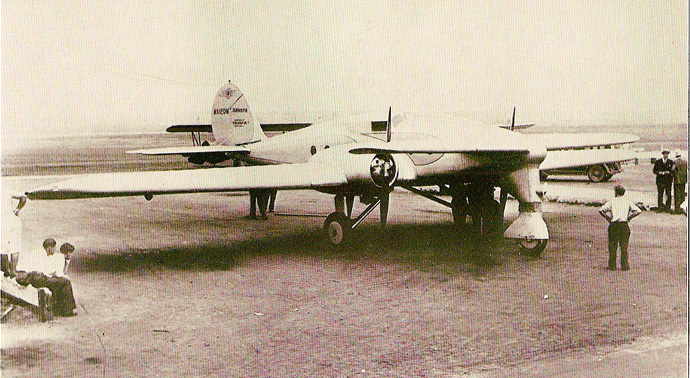The Fernic T-9 or Fernic Tandem Model 9 was an early three-surface aircraft. It possessed two lifting wings in tandem and designated as a conventional, twin-engine monoplane. Romanian aviator George Fernic designed the craft after emigrating to the United States. He developed the interesting machine in the Fernic Aircraft shops on Staten Island. Fernic intended the Tandem for flight distance record setting.
The Specifics
The tandem showed great promise. Some advanced feature included cantilever wings, tricycle landing gear, and fully cowled engines. For twin-engine safety, two, nine-cylinder Wright Whirlwind J5 engines powered the plane. Fernic added a 22-foot-long nose-mounted canard to reduce early stalling. The plywood covered aircraft also featured a castering nose wheel. Additionally, a spring steel tail skid installed to protect the tail.
Fernic tested the Tandem with Professor Alexander Klemin in the Guggenheim School of Aeronautics’ wind tunnels at New York University in 1926. For a proposed transatlantic crossing, Fernic removed the upper engine nacelles and installed a small outboard motor for water ditching.
Tandem Testing
The Tandem first flew at New York’s Roosevelt Field on September 10, 1929. Damage occurred to the landing gear and wings on the second day. Yet, Fernic still planned to make a record flight from the United States to Buchurest, Romania in the prototype. A tragic accident put an end to the proposed feat. Fernic died when he crashed his Fernic Cruisaire at an air show in Chicago on October 22, 1930. Why the airplane was built so large and so intricate just to test an elusive principle is a puzzle. It seemeed carefully designed and well-engineered, but sadly enough, it crashed and killed Fernic on its very first flight. Following his death, the Romanian Government decorated Fernic with the order of “Aviation Virtue” by the Romanian Government.

